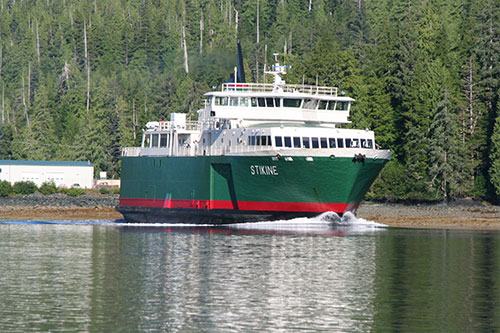
The Inter-Island Ferry Generated Nearly $50 Million in Economic Activity in 2019 and 508 Jobs
February 24, 2020
The 12-page publication, compiled by Rain Coast Data, shows that the IFA provides a high rate of return on investment. In 2019, the system generated $70 in economic activity for each dollar of State investment. Economic activity was measured in five areas: tourism, seafood, medical access, retail trade, and spending by the IFA – and includes direct and secondary impacts.
“We are both honored and humbled by the huge impacts that our reliable, daily ferry service has on our economy. We wanted to be able to share and communicate the value of the role that we play.” explains Ron Curtis General Manager of the Inter-Island Ferry Authority. “This publication concisely describes and calculates the economic and social impacts of IFA ferry service between Prince of Wales Island and Ketchikan.” Some other highlights of the study include the following:
Document summary: The Inter-Island Ferry Authority (IFA) is a public transit system that has been providing daily service between Prince of Wales Island and Ketchikan in Southeast Alaska since 2002. In 2019, the IFA ferried 44,200 passengers and 10,000 vehicles between Hollis and Ketchikan. The system is more than a form of transportation, it is an economic engine, generating jobs and commerce, while also increasing community well-being. A full economic impact analysis of ferry system activities in the tourism, seafood, health care, and retail sectors shows that the ferry generated $46.4 million in economic activity and supported 508 jobs in Ketchikan and Prince of Wales in 2019, including multiplier effects. In 2019, the IFA brought 2,900 tourists to Prince of Wales Island, where they spent more than $11 million on lodging, fishing, hunting, and dining - generating jobs across the island. Ferry service allowed the seafood industry to move two million pounds of high-quality, fresh and live seafood, valued at $10 million, to market. The ferry system provided $9 million worth of access to health care for island residents who rely on medical services available in Ketchikan. The IFA reinforced Ketchikan’s status as a regional economic hub, with Prince of Wales residents and the IFA system spending $9 million there last year on groceries, goods, services, and ship repairs. The Inter-Island Ferry allows for cultural and social commerce as well. Students, tribal members, and other residents use the system to participate in basketball games, totem pole raisings, trainings, college fairs, celebrations, and funerals. There were 3,100 student trips on the ferry last year, allowing students from 12 different Alaska school districts the opportunity to challenge themselves and interact with their peers. The ferry connects residents to family, friends, and recreation. It shuttles workers to and from their jobs. The ferry is the critical piece of a more extensive transportation network. It is the primary mode of transportation to and from the island. It provides transportation security in inclement weather, and access to transportation to those who cannot afford alternative means. One-third of the ridership last year were senior citizens and children. IFA’s reliable arrivals and departures enable organizations to build their business models around daily transportation connections. The word businesses and residents most frequently use to describe the ferry service is “invaluable.” The system’s efficient model means that farebox revenue covers 79% of operational costs, a significant rate in the world of public transportation. The IFA generates $70 in economic activity for every $1 of State of Alaska investment.
On the Web:
Edited By Mary Kauffman, SitNews
Source of News:
|
||||
